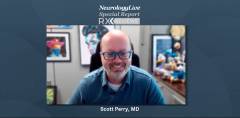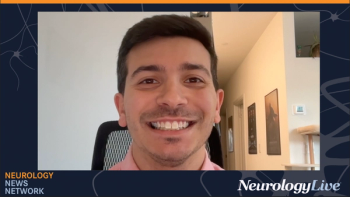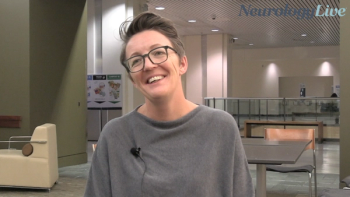
Mechanism and Rationale of Zorevunersen
In this kick-off segment, epilepsy expert Scott Perry, MD, explains how zorevunersen uses antisense oligonucleotide technology to correct SCN1A gene expression and address the underlying cause of Dravet syndrome.
Episodes in this series

Zorevunersen is an investigational antisense oligonucleotide therapy being studied for Dravet syndrome, a developmental and epileptic encephalopathy caused primarily by pathogenic variants in the SCN1A gene. By modulating RNA splicing to enhance production of functional sodium channel protein, zorevunersen is designed to target the underlying genetic mechanism of the disorder. Early clinical studies have suggested reductions in seizure frequency and signals of improvement across adaptive behavior measures, warranting further investigation in phase 3 evaluation.
In this NeurologyLive® Special Report mini-series,
In episode 1, Perry outlines the haploinsufficiency mechanism of Dravet syndrome, where one copy of the SCN1A gene produces a dysfunctional sodium channel. He explains how zorevunersen binds to a nonsense-mediated decay exon to promote proper translation of the healthy gene copy, effectively restoring sodium channel production. The therapy’s precision in addressing the genetic root cause distinguishes it from traditional anti-seizure medications that focus only on symptom control.
Transcript edited for clarity.
Scott Perry, MD: Zorevunersen is designed to get at the source of Dravet syndrome. Dravet is a haploinsufficiency disorder—meaning patients have one healthy copy of the SCN1A gene and one copy that contains a variant resulting in a nonfunctional, or poorly functional, sodium channel protein.
What zorevunersen does is target the way that gene is transcribed. As DNA is converted into pre-messenger RNA, some transcripts include a nonsense-mediated decay exon, a sequence that signals the ribosome to stop production and destroy the RNA. This happens even with some healthy transcripts.
Zorevunersen is an antisense oligonucleotide that binds to this exon, preventing its inclusion. When it binds, the RNA becomes double-stranded, which the ribosome cannot read—so the exon is skipped, and the ribosome reads through, producing a full-length, functional protein. The result is that all copies of the healthy version are translated, while the mutant copies remain nonfunctional.
This approach directly addresses the genetic cause of Dravet syndrome, unlike current therapies that treat the symptoms—primarily seizures. By targeting the root cause, we hope to achieve benefits that go beyond seizure control.
Newsletter
Keep your finger on the pulse of neurology—subscribe to NeurologyLive for expert interviews, new data, and breakthrough treatment updates.





































